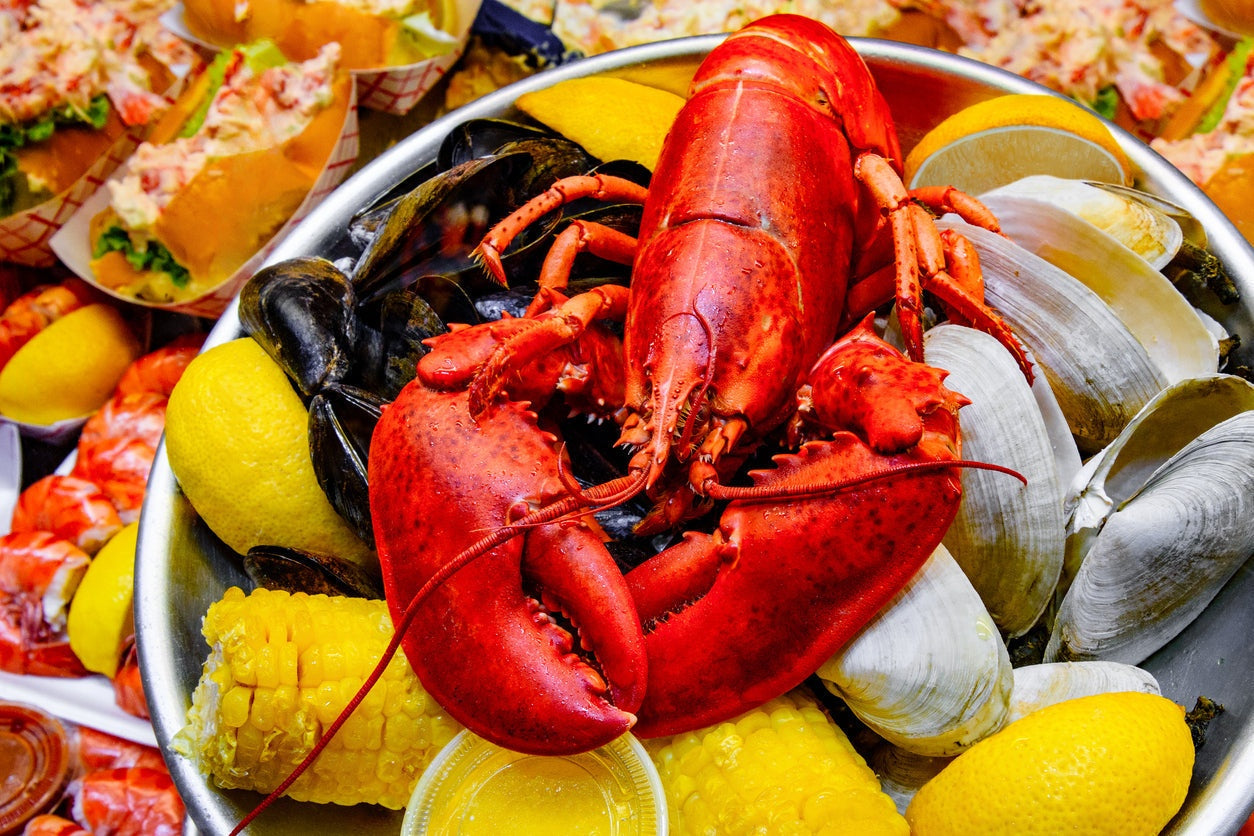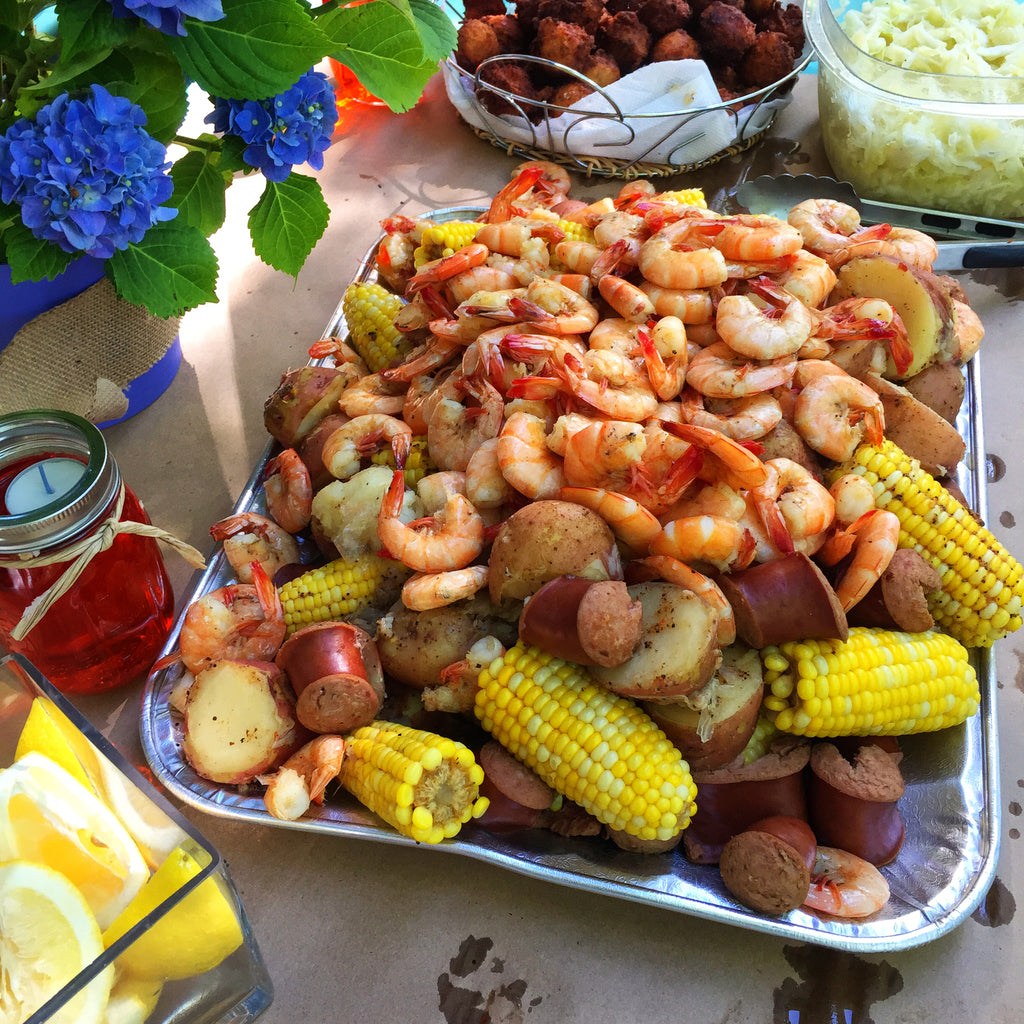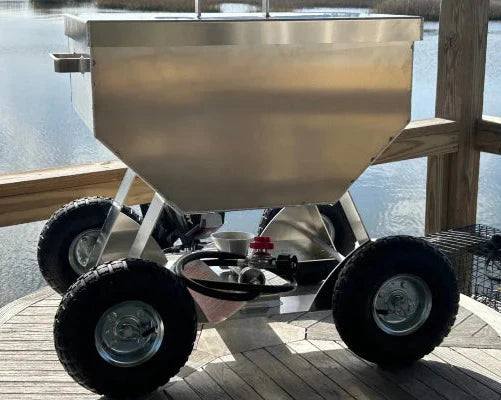
The Best Techniques for Boiling Lobster Outdoors
Understanding the Basics of Outdoor Lobster Boiling
Boiling lobster outdoors is a rewarding culinary experience that combines fresh seafood with the joys of outdoor cooking. To ensure success, it’s essential to understand the basics, including the tools, ingredients, and preparation steps required. Outdoor lobster boiling requires careful planning and attention to detail, but with the right approach, you can create a delicious meal that’s perfect for gatherings or a quiet evening under the open sky.
Tools and Equipment You’ll Need
The right tools and equipment are crucial for boiling lobster outdoors. Start with our Classic Cooker which will be big enough to hold several lobsters and enough water to submerge them completely. A thermometer is useful for monitoring water temperature, ensuring it stays consistent throughout the cooking process.
Handling hot lobsters requires sturdy tongs and heat-resistant gloves to avoid burns. Additionally, a sturdy table or surface to place your pot and burner is important for stability. If you’re cooking for a crowd, consider investing in a larger setup, such as a turkey fryer kit, which can double as a lobster boiling station.
Choosing the Right Lobster
Selecting fresh, high-quality lobsters is key to a successful boil. Look for lobsters that are lively and active, as this indicates freshness. The shell should be hard, and the lobster should feel heavy for its size. If you’re unsure, ask your fishmonger for advice on the best lobsters available.
Size matters when boiling lobster outdoors. Smaller lobsters, typically weighing 1 to 1.5 pounds, cook faster and are easier to handle, making them ideal for beginners. Larger lobsters, while impressive, require longer cooking times and more careful monitoring. Choose the size based on your experience level and the number of guests you’re serving.
Essential Ingredients for Flavorful Lobster
The foundation of a great lobster boil is the water. Saltwater, either from the ocean or made by adding sea salt to fresh water, is ideal for mimicking the lobster’s natural environment. For added flavor, consider incorporating optional ingredients like garlic cloves, bay leaves, lemon slices, or even a splash of white wine. These aromatics infuse the lobster with subtle flavors without overpowering its natural sweetness.
Experimenting with herbs and spices can elevate your lobster boil. Dill, thyme, and parsley are popular choices, while a pinch of cayenne pepper can add a hint of heat. Keep the flavors balanced to ensure the lobster remains the star of the dish.
Setting Up Your Outdoor Cooking Station
A well-organized outdoor cooking station is essential for a smooth and enjoyable lobster boiling experience. Proper setup ensures safety, efficiency, and ease of cleanup.
Selecting the Perfect Location
Choose a flat, stable surface for your cooking station to prevent accidents. A sturdy table or outdoor countertop works well, but avoid placing your setup directly on grass or uneven ground. Ventilation is crucial, especially when using a propane burner, so opt for an open area away from walls or enclosed spaces.
Safety precautions are non-negotiable. Keep your burner away from flammable materials, and have a fire extinguisher or bucket of water nearby in case of emergencies. If you’re cooking in windy conditions, use a windscreen to protect the flame and maintain consistent heat.
Setting Up Your Burner and Pot
Ensure the cooker is level. Our integrated legs make for a stable cooking platform.
Fill the pot with water, leaving enough room to prevent overflow when the lobsters are added. Heat the water gradually, using a thermometer to monitor the temperature. Aim for a rolling boil, typically around 212°F (100°C), before adding the lobsters.
Step-by-Step Guide to Boiling Lobster Outdoors
Boiling lobster outdoors is a straightforward process, but attention to detail is key to achieving perfect results. Follow these steps for a successful boil.
Preparing the Lobsters
Handling live lobsters requires care and respect. To humanely prepare them, place the lobsters in the freezer for 15-20 minutes to numb them before cooking. This minimizes stress and ensures a more humane process.
Before boiling, rinse the lobsters under cold water to remove any debris or sand. Check for any damaged or broken claws, as these can affect cooking times. If you’re boiling multiple lobsters, ensure they’re similar in size for even cooking.
Boiling the Lobsters
Once the water reaches a rolling boil, carefully add the lobsters using tongs. Submerge them completely, ensuring they’re not overcrowded in the pot. Cover the pot with a lid to maintain heat and prevent splashing.
Cooking times vary based on lobster size. As a general rule, boil lobsters for 8-10 minutes per pound. For example, a 1.5-pound lobster will take approximately 12-15 minutes. Adjust cooking times slightly for larger or smaller lobsters.
Checking for Doneness
Perfectly cooked lobster has a bright red shell and firm, opaque meat. To confirm doneness, use a thermometer to check the internal temperature, which should reach 135°F (57°C). Alternatively, pull on one of the small legs; if it detaches easily, the lobster is ready.
Avoid overcooking, as this can result in rubbery meat. If you’re unsure, err on the side of slightly undercooked, as the lobster will continue to cook slightly after being removed from the pot.
Enhancing the Flavor of Your Lobster Boil
While lobster is delicious on its own, a few simple additions can elevate its flavor and make your outdoor boil unforgettable.
Adding Aromatics to the Boiling Water
Infuse your boiling water with aromatics like garlic, bay leaves, and lemon slices for a subtle boost of flavor. Add these ingredients as the water heats, allowing them to release their essence before the lobsters are added.
For a unique twist, try adding fresh herbs like dill or thyme, or experiment with spices like paprika or cayenne. Keep the flavors balanced to complement, rather than overpower, the lobster’s natural sweetness.
Pairing Lobster with Dipping Sauces
Melted butter is a classic accompaniment to lobster, but there are plenty of variations to explore. Add garlic, parsley, or lemon juice to your butter for a fresh twist. For a more adventurous option, try sauces like spicy aioli, citrus vinaigrette, or creamy dill dip.
Pairing lobster with the right sauce enhances its flavor and provides a customizable dining experience. Offer a variety of sauces to cater to different tastes and preferences.
Serving and Enjoying Your Outdoor Lobster
Presentation and pairing are key to making the most of your lobster boil. Serve your lobster with care and complement it with delicious sides.
Cracking and Eating Lobster Like a Pro
Provide guests with lobster crackers, seafood picks, and napkins to make eating easier. Start by twisting off the claws, then crack them open to extract the meat. Remove the tail by twisting it from the body, and use a fork to push out the meat.
Encourage guests to savor the lobster meat slowly, dipping it into their preferred sauce for added flavor. Eating lobster can be messy, but it’s all part of the fun!
Side Dishes to Complement Your Lobster
Traditional sides like corn on the cob, boiled potatoes, and coleslaw are perfect companions to lobster. For a creative twist, consider grilled vegetables, garlic bread, or a fresh salad with citrus dressing.
Balance the richness of the lobster with lighter sides to create a well-rounded meal. Offer a variety of options to cater to different tastes and dietary preferences.
Troubleshooting Common Outdoor Lobster Boiling Issues
Even experienced cooks can encounter challenges when boiling lobster outdoors. Here’s how to address common issues.
Avoiding Overcooked or Undercooked Lobster
Monitor cooking times carefully and use a thermometer to ensure accuracy. If your lobster is overcooked, the meat will be tough; if undercooked, it will be translucent and underwhelming. Adjust cooking times based on lobster size and outdoor conditions.
Managing Outdoor Cooking Challenges
Wind, uneven heat, and limited space can complicate outdoor cooking. Use a windscreen to protect your burner, and ensure your pot is stable on a flat surface. If space is limited, organize your tools and ingredients efficiently to avoid clutter.
Cleaning Up After Your Lobster Boil
Proper cleanup ensures your outdoor space remains tidy and ready for future use.
Disposing of Lobster Shells and Leftovers
Dispose of lobster shells responsibly by composting them or using them to make seafood stock. Avoid leaving shells outdoors, as they can attract pests.
Cleaning Your Equipment
Wash your pot, burner, and utensils thoroughly with warm, soapy water. Dry them completely to prevent rust, and store them in a clean, dry area. Regular maintenance extends the lifespan of your outdoor cooking gear.
Final Tips for a Memorable Outdoor Lobster Boil
A few extra touches can make your lobster boil truly special.
Hosting a Lobster Boil Party
Invite friends and family to share in the experience. Set up a casual outdoor dining area with picnic tables, string lights, and themed decorations. Consider adding activities like lawn games or music to enhance the atmosphere.
Seasonal Considerations for Outdoor Lobster Boiling
Spring and summer are ideal for outdoor lobster boils, but with the right setup, you can enjoy them year-round. In cooler weather, use windbreaks and portable heaters to stay comfortable.

